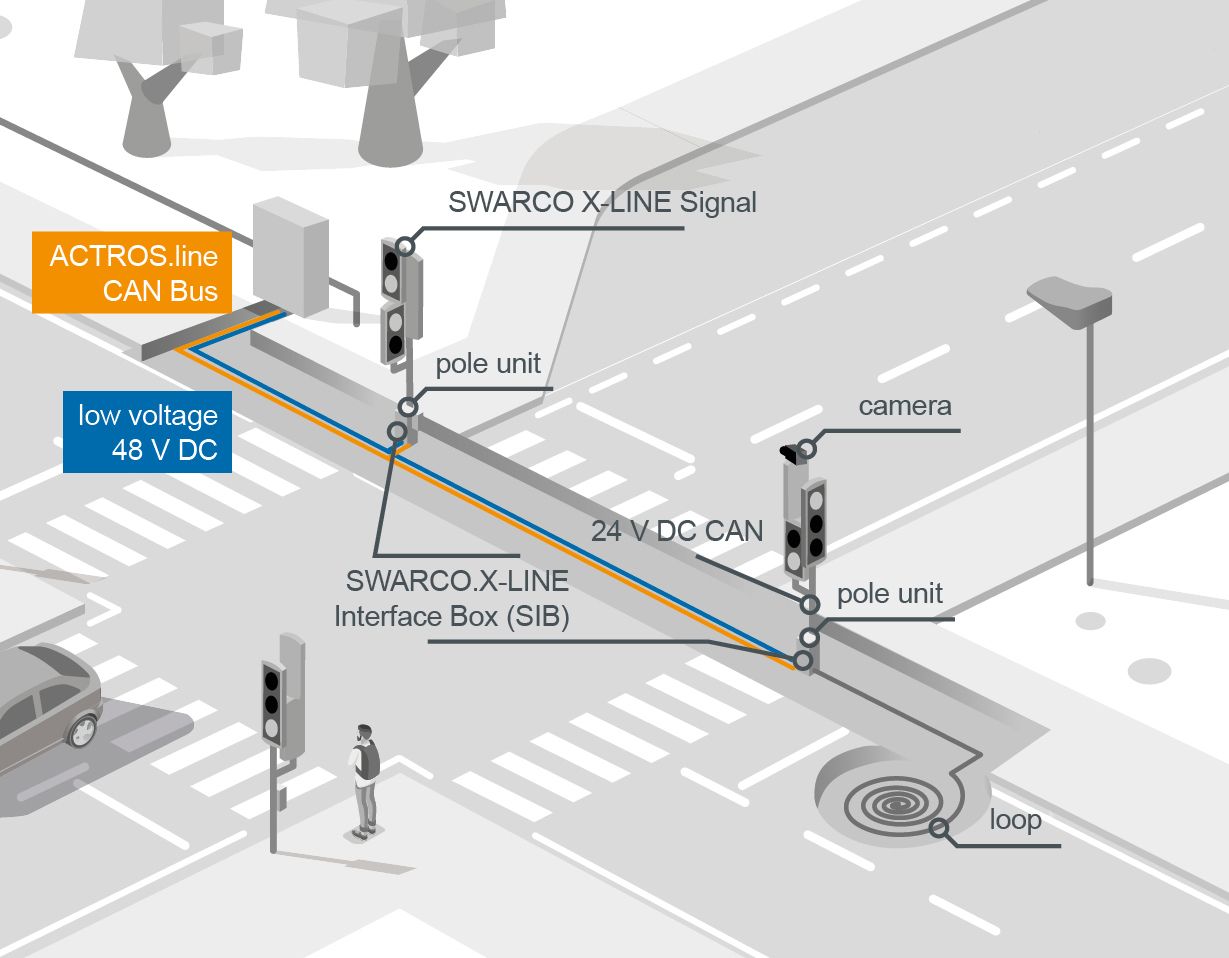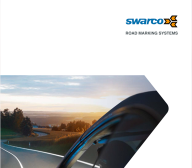SWARCO X-LINE works with decentralized intelligence and controls traffic light systems via a CAN-based network (Control Area Network). This opens up a wealth of new functions and expansion possibilities for the user in the future.
Thinking intersection control further
With the new SWARCO X-LINE platform, the concept of the Internet of Things is fi nding its way into municipal intersection management. This is exactly the right time to do so, because compliance with increasingly stringent air pollution control regulations and the growing networking of autonomous and nonautonomous vehicles will require ever more effi cient municipal traffi c control systems and signalling systems in the future.
Modernization without traffic jams
Another major advantage of SWARCO X-LINE, in combination with ACTROS ECUs, is that the existing cable infrastructure can be reused. As a result, you save on civil engineering and costly road safety measures during the conversion of the plant - and thus also on unpopular construction sites, traffi c jams and the associated additional pollution of the air by nitrogen oxides and particulate matter. In addition, the copper cables that are not needed saves on raw materials.
Prevention replaces repair
And the new system also fulfi ls its inherent task of safe and reliable signalling better than ever before. Traditional signal heads controlled via an electrical interface can only indicate if they are currently working or not. The new solution offers the possibility of retrieving detailed information on a critical failure in the signal head. Non-critical failures and minor incidents can also be reported. Consequently, predictive and event triggered activities are possible, rather than just periodic maintenance. Finally, the functionality can be enhanced, applying service patches remotely via a firmware update.
Less energy for more power
In traditional systems, the electrical interface between traffic light controller and signal head uses the consumed energy as an indicator of whether the signal head works or not. Even in the deactivated mode (i.e. signal off) the power loss is about 6 to 5W depending on the geographical region.
The electronic interface allows a dramatic reduction in power loss to 1 or 2W, which results in an increase in power effi ciency. Moreover, due to minimal power consumption of LEDs, electrical disturbances on the line can be eliminated and supervision is more robust.

SWARCO Innovation Talk about X-LINE
Easily
Extendable
Future
Safe
Energy-
Efficienct
Environmentally
Sound
- easily extendable and therefore future safe
- increases energy efficiency
- environmentally sound by decreasing civil works and thereby minimizing traffic jams
- Open interfaces for smooth integration - The specification of the CAN-based interface is open for any
integrator. - Increased safety level and up-time - exceptionally innovative but also exceptionally reliable: The
solution is fully compliant with the requirements of EN61508, SIL 3, - The intersection of things with its CAN-based network and full
compliance with product and safety standards enables new services
and supports the concept of the Internet of Things (IoT).
